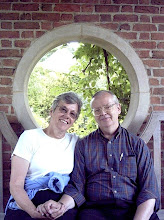Late in the third day of his journey, he tells us, “at the very moment when, at sunset, we were making our way through a herd of hippopotamuses, there flashed upon my mind, unforeseen and unsought, the phrase, ‘Reverence for Life.’ The iron door had yielded: the path in the thicket had become visible. Now I had found my way to the idea in which world- and life-affirmation and ethics are contained side by side! Now I knew that the world-view of ethical world- and life-affirmation, together with its ideals of civilization, is founded in thought.” So was kindled the light which has since made clear every path his thought has traveled.
The most immediate fact in human consciousness is the realization: “I am life which wills to live, in the midst of life which wills to live.” I must, therefore, revere my own life and the life around me. “A man is ethical,” said Schweitzer, “only when life, as such, is sacred to him, that of plants and animals as that of his fellowmen, and when he devotes himself helpfully to all life that is in need of help.” Ethics are absolutely boundless in their domain and in their demands. This is the ethical foundation of Schweitzer’s philosophy of civilization. The ultimate source of all the catastrophes and misery of our times is the lack of any consistent ethical theory of the universe….
— From Charles R. Joy’s Introduction to The Wit and Wisdom of Albert Schweitzer.
If the talents succumb to the errors of their time, what matter? But when the men of genius are ensnared in them, centuries have to suffer for it.
— Albert Schweitzer, Bach, I, p. 96.
Jesus comes to us as One unknown, without a name, as of old, by the lake-side, He came to those men who knew Him not. He speaks to us the same word: “Follow thou me!” and sets us the tasks which He has to fulfill for our time. He commands. And to those who obey Him, whether they be wise or simple, He will reveal Himself in the toils, the conflicts, the sufferings which they shall pass through in His fellowship, and, as an ineffable mystery, they shall learn in their own experience Who He Is.
— Albert Schweitzer, Quest for the Historic Jesus, p. 401.
I do not say, “I am life”; for life continues to be a mystery too great to understand. I only know that I cling to it. I fear its cessation — death. I dread its diminution — pain. I seek its enlargement — joy.
— Albert Schweitzer, Reverence for Life, p. 228.
One is no closer to happiness or the Grail by leaving flesh-and-blood woman alone. When we take this inner law and try to apply it outwardly, we end up being puritanical and guilt-ridden, which practically all of us are, and we still have no laws for our inner conduct. There is little information in the Grail myth about what to do with flesh-and-blood women, but there is a great deal about what to do with the inner woman. That is the information we need so badly.
One can think of many spiritual things that are negated by taking them outwardly instead of inwardly. The virgin birth is one. This has a powerful meaning for anyone who is going through the individuation process, for it tells us that the miraculous event, the birth of Christ within us, comes about through the intercourse of divine powers with the eternal human soul. That Christ birth comes in us too, if our soul interacts with God, and when it does it is just as miraculous and unbelievable as a virgin birth. But if we get stuck in the ritual, historical question — did it happen literally that way with Jesus’ human birth — then we never get to this inner meaning and its profound truth.
Much of Christianity is a set of laws for relating to, coping with, or making meaningful the inner parts of one’s being, not a set of laws for outer conduct. Few people are aware of this differentiation.
If we confuse these laws — inner and outer — we really have a difficult thing going. If a man treats a flesh-and-blood woman according to the laws that would be appropriate for his own interior femininity, his anima, there is just chaos.
Look at what happened in the Middle Ages, when man first really began to cope with the anima. The anima has always been there, but it is only recently that man has had the capacity to come to any kind of conscious relationship to his own femininity. Before that, everything was lived out instinctively with the flesh-and-blood women around him. It was when man began to come to sense the difficulty of the anima and her danger to him that all the witch hunts started. Instead of quelling the interior feminine, which was the dangerous one, he had to go out and burn some poor creature who was behaving a little strangely. We are just getting to the point now where we can burn the right woman, namely, the interior one (although burning her is not too good a practice in any case; she will turn around and burn you if you do). We haven’t really gone very far past the witch hunts yet. We are still projecting onto outer, flesh-and-blood women our relationship, or lack of it, to our inner femininity….
— Robert A. Johnson, He, pp. 30-31.
Subscribe to:
Post Comments (Atom)

No comments:
Post a Comment